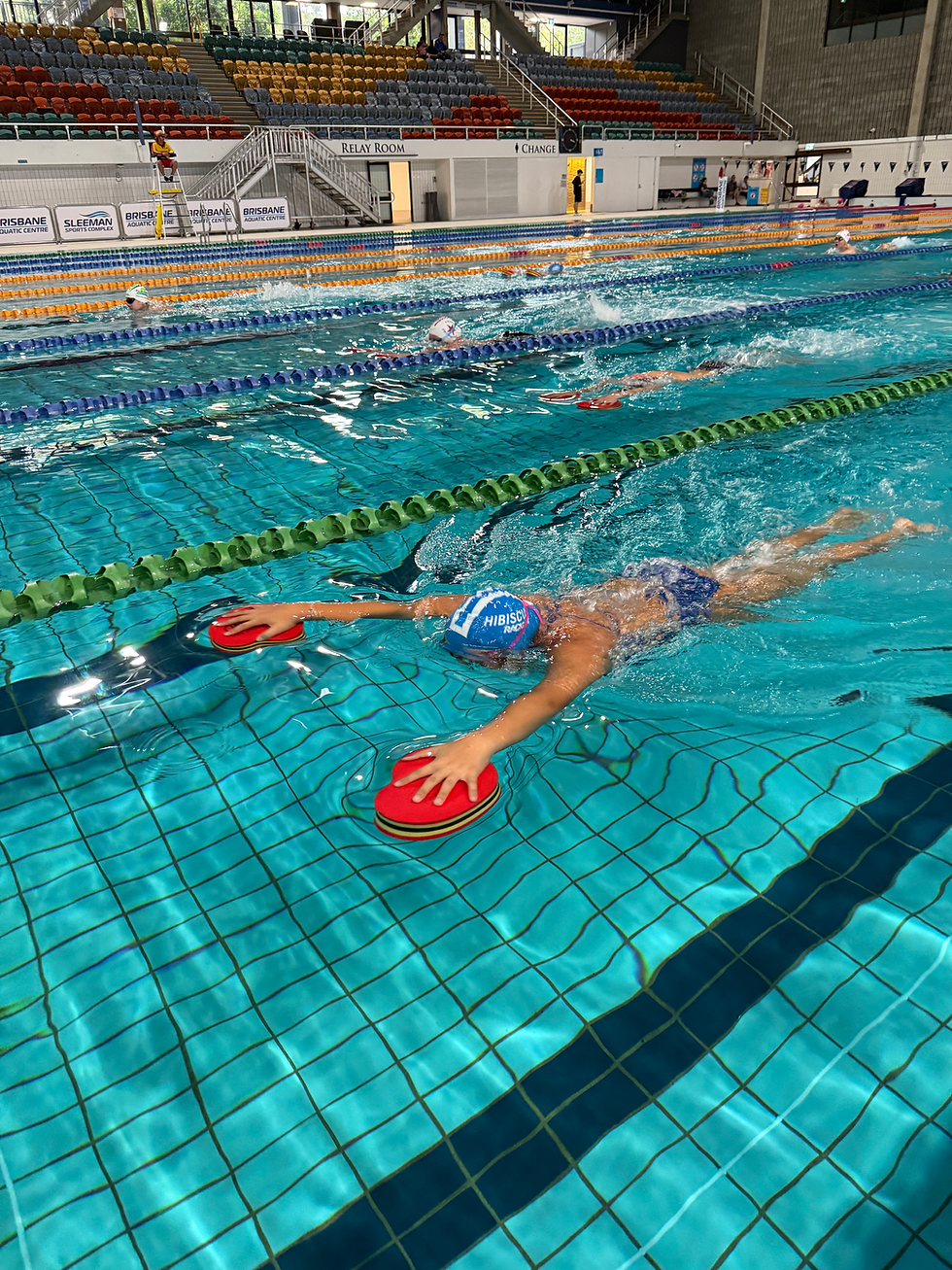The Role of Texture in Neural Stimulation and Skill Acquisition: How ONCORE Enhances Muscle Memory
- Jade Edmistone

- Feb 6
- 3 min read
When it comes to skill acquisition and muscle memory, particularly in physical activities such as swimming, the sensory experience provided by tactile feedback plays a critical role. Neural receptors in the skin, specifically those attuned to texture and pressure, offer essential feedback to the brain, helping to form stronger neural pathways. This sensory stimulation enhances learning, improves performance, and solidifies muscle memory. ONCORE, with its purposeful textured surface, capitalises on this principle, making it an innovative tool for swimmers seeking to improve technique and efficiency.
Understanding Neural Receptors and Texture
Our skin is equipped with millions of sensory receptors that detect pressure, temperature, and texture. When it comes to physical activity and skill development, two key types of mechanoreceptors are involved:
1. Meissner’s Corpuscles: These receptors are sensitive to light touch and texture, helping us to discern fine detail.
2. Merkel’s Discs: These respond to sustained pressure and are crucial for detecting shapes and edges.
When textured surfaces interact with these receptors, they send detailed information to the brain, which is then used to adjust movements and improve motor skills. This is where the concept of tactile feedback becomes central to deeper learning and the development of muscle memory.
Texture, Neural Pathways, and Muscle Memory
Tactile feedback enhances the brain’s ability to create stronger and more refined neural pathways. Each time we perform a physical task, such as swimming, our brain uses sensory feedback to adjust and optimise the movement. Texture heightens this process by stimulating neural receptors more effectively than smooth surfaces, providing more detailed and immediate feedback. The brain then uses this rich information to fine-tune muscle contractions and body positioning, leading to:
Faster learning: More data from neural receptors allows the brain to adjust movements in real-time, speeding up skill acquisition.
Deeper retention: Engaging more sensory input helps encode movements into long-term muscle memory, so they become automatic over time.
Enhanced proprioception: The textured feedback enhances your awareness of your body’s position and movements in space, crucial for activities requiring precise control, such as swimming.
How ONCORE Leverages Texture for Deeper Learning
The textured surface of ONCORE is purposeful to stimulate these neural receptors, making it more than just a tool for physical resistance in the water. It serves as a sensory input device that encourages stronger and faster neural pathway formation, enhancing the body’s ability to learn and retain new movements.
When a swimmer uses ONCORE, the textured surface creates a constant stream of sensory information, particularly during drills that emphasise feel and hold in the water. As pressure is applied when performing ONCORE drills, the neural receptors in the hands receive detailed information about the water’s resistance, the force exerted, and the swimmer’s alignment and control. This continuous feedback loop allows the swimmer’s brain to quickly adjust movements for greater efficiency and stability.
Building Skill Acquisition and Muscle Memory with ONCORE
Because ONCORE provides both physical resistance and rich sensory feedback through its textured surface, it enhances the learning environment for swimmers. By actively engaging the body’s stabilising and core muscles, ONCORE helps swimmers gain better control over their movements, all while reinforcing neural pathways through sensory stimulation.
This tactile engagement means that swimmers are not just moving through the water; they are actively learning how to manipulate and control their body position, core stability, and water hold more effectively. The more these movements are repeated with tactile feedback, the stronger the neural pathways become, allowing for the development of automatic muscle memory.

Final Thoughts
The role of texture in stimulating neural receptors is essential to skill acquisition and muscle memory. ONCORE, with its textured surface, goes beyond traditional training aids by engaging swimmers on a sensory level, allowing for faster learning, better retention, and stronger technique. By enhancing tactile feedback, ONCORE helps swimmers build more efficient neural pathways, ultimately improving their performance and mastery of swim techniques. Whether for competitive athletes or casual swimmers, the combination of physical resistance and neural stimulation offered by ONCORE can make a profound difference in both learning and long-term skill retention.


